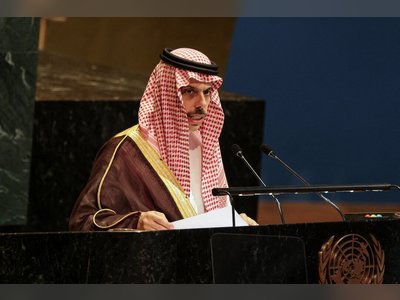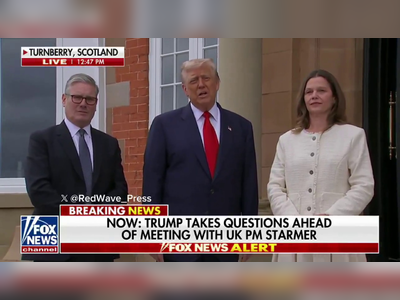Intense Negotiations at G7 Summit as US Threatens 50% Tariffs on European Goods
Leaders of the US and EU meet in Canada amid escalating trade tensions and geopolitical crises.
The 50th annual G7 summit is underway in Kananaskis, Canada, where leaders from major industrialized democracies, including Germany, the United Kingdom, Canada, the United States, France, Italy, and Japan, are convening from June 15-17. The discussions occur against the backdrop of heightened international tensions, including the ongoing war in Ukraine and rising confrontations between Israel and Iran.
Central to the meeting are the escalating trade tensions initiated by the United States under the leadership of President Donald Trump, who faces criticism for his aggressive economic stance.
Trump has threatened to impose tariffs of up to 50% on goods entering from Europe, beginning July 9, a substantial increase from the current tariff of 12.5%.
This move aims to correct what Trump perceives as an imbalance in trade, particularly given the European Union's significant trade surplus of €48 billion with the United States.
European leaders, including Ursula von der Leyen, President of the European Commission, and Antonio Costa, President of the European Council, have articulated their resolve to persuade Trump to abandon these plans.
Upon their arrival in Canada, they held a press conference emphasizing the need for fair, predictable, and open trade, warning against the dangers of protectionism.
Von der Leyen's assertion that the EU must be respected in tariff discussions reflects the Union's stance on maintaining an equitable trading environment.
Moreover, the economic implications of these tariffs could lead to increased prices for American consumers, a projection that is currently obscured by falling energy prices and corporate margin adjustments.
Analysts have noted that while immediate price impacts are not yet felt, the potential for consumer price increases remains significant should tariffs be implemented.
In response to the threat of increased tariffs, Germany's Chancellor Friedrich Merz has signaled a willingness to consider greater imports of raw materials from the US. This development aligns with broader efforts to stabilize trade relations and diminish tension between the two economic powers.
The US Treasury Secretary Scott Bessent has also suggested that the administration may consider extending the pause on tariffs after the July deadline, indicating a potential thaw in bilateral relations ahead of the summit.
Emerging from preliminary talks, reports indicate that the EU might accept a generalized 10% tariff on exports in exchange for the US foregoing increased tariffs.
Additionally, the EU could be amenable to reducing tariffs on American manufactured vehicles and addressing regulatory barriers affecting US automotive sales in Europe.
Shared concerns over economic competition with China may further catalyze cooperation between the US and EU. The significant US trade deficit with China, exceeding €260 billion across all goods and services, has prompted discussions about formulating a unified strategy to combat economic distortions attributed to Chinese policies.
As the summit progresses, leaders are aware of the historical context surrounding G7 negotiations; previous encounters have been marred by discord, notably when Trump departed the last G7 meeting in Canada in a contentious manner due to tariff disputes.
Central to the meeting are the escalating trade tensions initiated by the United States under the leadership of President Donald Trump, who faces criticism for his aggressive economic stance.
Trump has threatened to impose tariffs of up to 50% on goods entering from Europe, beginning July 9, a substantial increase from the current tariff of 12.5%.
This move aims to correct what Trump perceives as an imbalance in trade, particularly given the European Union's significant trade surplus of €48 billion with the United States.
European leaders, including Ursula von der Leyen, President of the European Commission, and Antonio Costa, President of the European Council, have articulated their resolve to persuade Trump to abandon these plans.
Upon their arrival in Canada, they held a press conference emphasizing the need for fair, predictable, and open trade, warning against the dangers of protectionism.
Von der Leyen's assertion that the EU must be respected in tariff discussions reflects the Union's stance on maintaining an equitable trading environment.
Moreover, the economic implications of these tariffs could lead to increased prices for American consumers, a projection that is currently obscured by falling energy prices and corporate margin adjustments.
Analysts have noted that while immediate price impacts are not yet felt, the potential for consumer price increases remains significant should tariffs be implemented.
In response to the threat of increased tariffs, Germany's Chancellor Friedrich Merz has signaled a willingness to consider greater imports of raw materials from the US. This development aligns with broader efforts to stabilize trade relations and diminish tension between the two economic powers.
The US Treasury Secretary Scott Bessent has also suggested that the administration may consider extending the pause on tariffs after the July deadline, indicating a potential thaw in bilateral relations ahead of the summit.
Emerging from preliminary talks, reports indicate that the EU might accept a generalized 10% tariff on exports in exchange for the US foregoing increased tariffs.
Additionally, the EU could be amenable to reducing tariffs on American manufactured vehicles and addressing regulatory barriers affecting US automotive sales in Europe.
Shared concerns over economic competition with China may further catalyze cooperation between the US and EU. The significant US trade deficit with China, exceeding €260 billion across all goods and services, has prompted discussions about formulating a unified strategy to combat economic distortions attributed to Chinese policies.
As the summit progresses, leaders are aware of the historical context surrounding G7 negotiations; previous encounters have been marred by discord, notably when Trump departed the last G7 meeting in Canada in a contentious manner due to tariff disputes.










